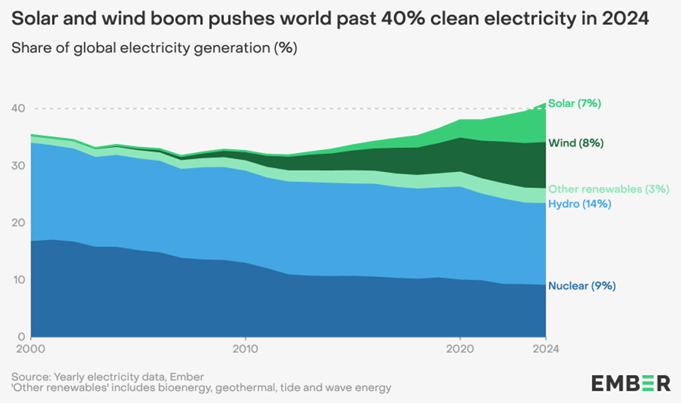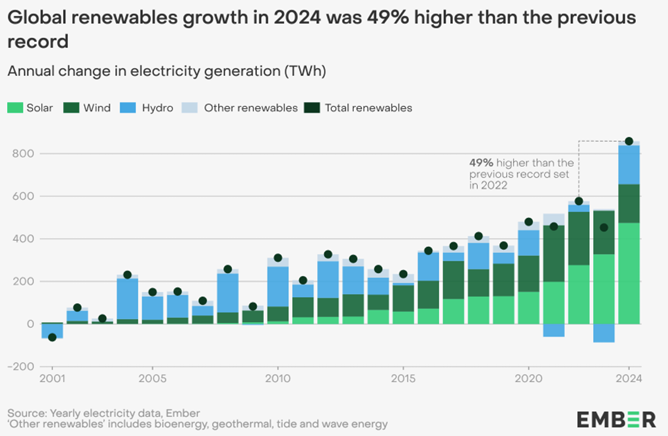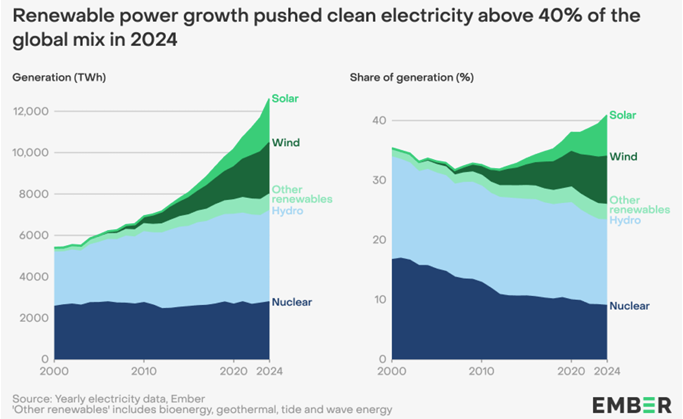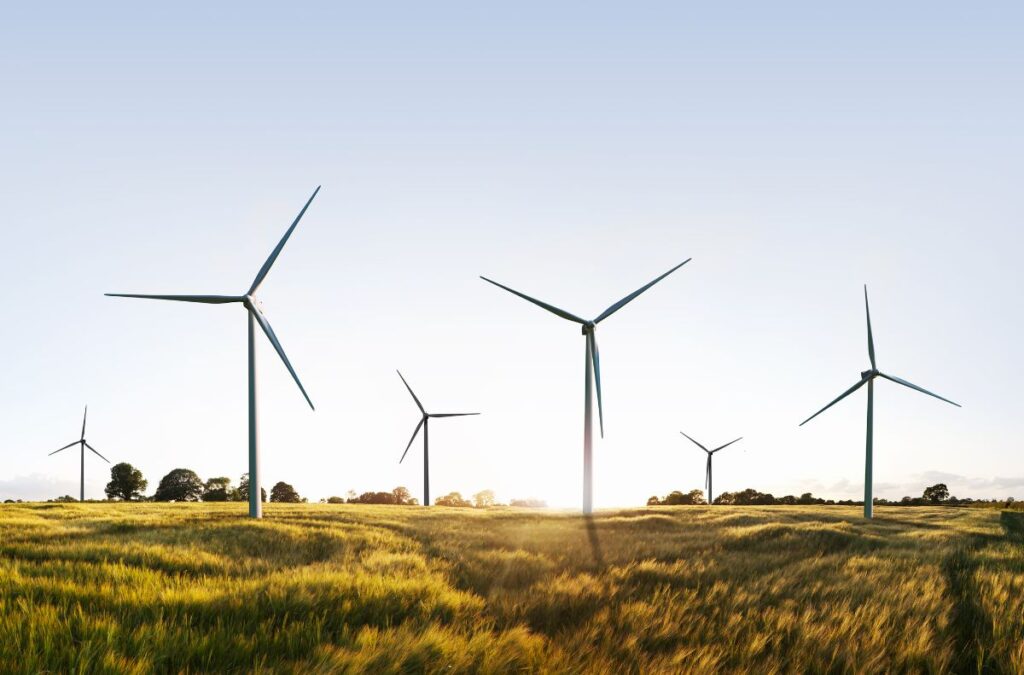According to the latest report by the Ember Global Electricity Review 2025, global electricity from clean sources (renewable and nuclear) exceeded 40% of total production during 2024. As they state, this shift can primarily be attributed to record solar energy production. At the same time, during heat waves, increased energy consumption led to a slight increase in production from fossil fuels.

Key data from the report for 2024:
40.9% – Share of electricity from clean sources in global production;
+29% – Growth rate of solar energy production, the highest in the last six years;
+4.0% – Increase in electricity demand due to heat waves.

Solar energy as an engine of energy transition
Solar energy has proven to play a key role in the global transition to clean electricity, setting new records in both generation and capacity installations during 2024. The growth of solar production has doubled in the last three years, making solar energy the most important source of additional electricity.
However, overall electricity demand accelerated its growth in 2024, outpacing the increase in clean generation. The main cause of this increase in consumption was the increased use of refrigeration appliances during intense heat waves, which also resulted in a slight increase in production from fossil fuels.
– Solar power has become the engine of the global energy transition. Paired with battery storage, solar is set to be an unstoppable force. As the fastest-growing and largest source of new electricity, it is critical in meeting the world’s ever-increasing demand for electricity – says Phil MacDonald, Managing Director of Ember.

In 2024, 80 countries generated more than half of their electricity from clean sources, with 47 countries exceeding that share by 75%.
About the report
Ember’s sixth annual Global Electricity Review provides a detailed overview of changes in global electricity generation during 2024, based on officially reported data.
The report analyses electricity data from 215 countries, including the latest 2024 data for 88 countries accounting for 93% of global electricity demand, as well as estimates for 2024 for all other countries.
They also point out that they provide free access to all data so that others can conduct their own analysis and thus contribute to accelerating the transition to clean electricity.
You can read the full report here:


